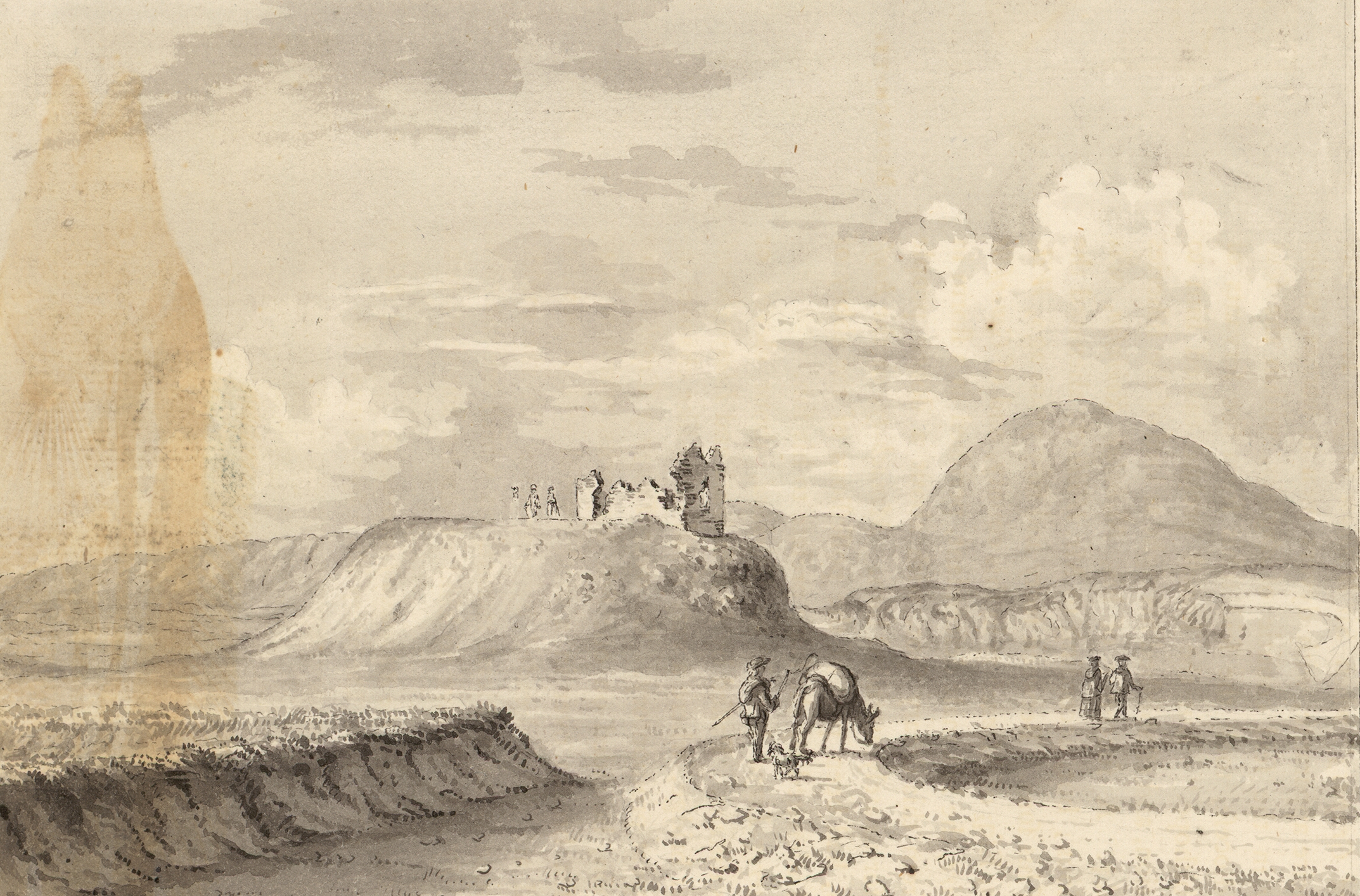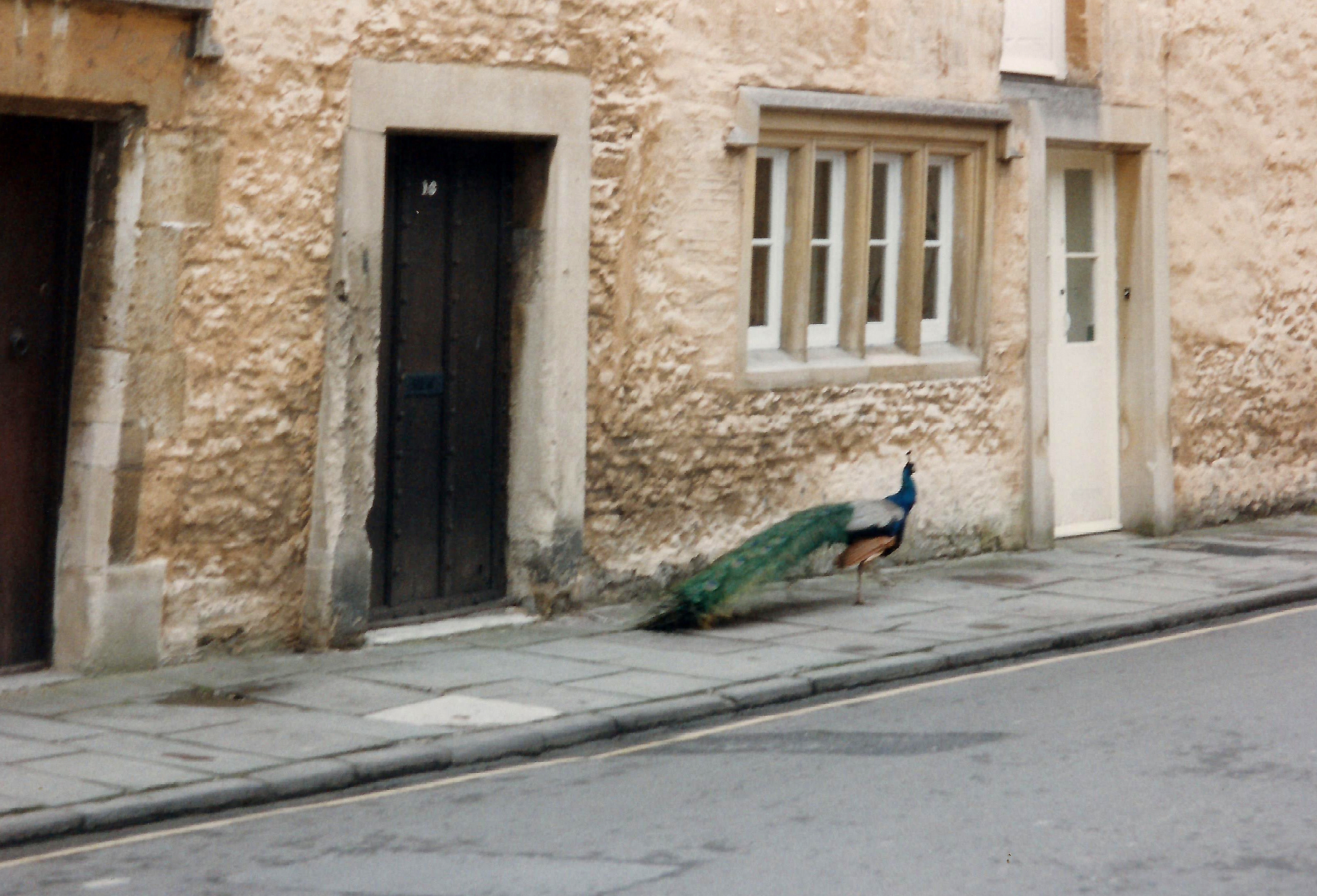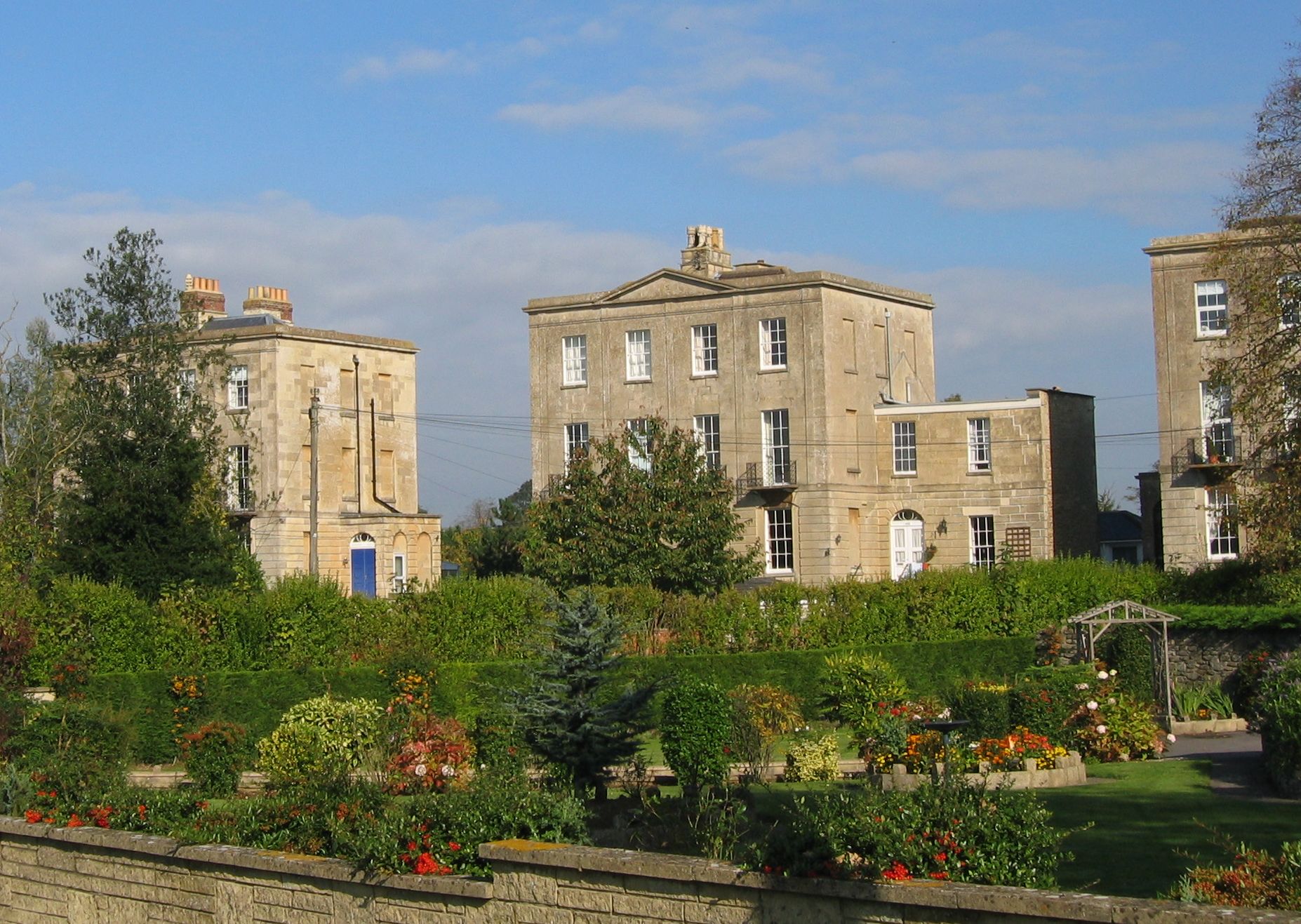|
A363 Road
The A363 is a main road in the United Kingdom which runs through Bath and North East Somerset and Wiltshire. It provides a link between the small market towns of West Wiltshire and Bath, the M4 westbound, and the M5. It runs from the A4 at Bathford to the A350 at Yarnbrook, passing through Bradford-on-Avon and Trowbridge. It also links Westbury by merging with the A350. Route The road starts off bypassing Bathford to the west. It then climbs up the hill known locally as ''Sally in the Woods'', on the edge of the Cotswolds Area of Outstanding Natural Beauty, which has been the scene of a fatal accident. The road summits at the turn-off to Monkton Farleigh, at an altitude of 144 metres. After this, the road quality improves in that it widens and is straighter. This continues up to the approach to Bradford-on-Avon. Through Bradford-on-Avon itself, the road descends a steep 1 in 7 (14%) hill, known as ''Masons Lane''. This is the road's main bottleneck since this leads to Bra ... [...More Info...] [...Related Items...] OR: [Wikipedia] [Google] [Baidu] |
Bathford
Bathford (pronounced with the emphasis on the second syllable) is a village and civil parish east of Bath, England. The parish, which includes Warleigh, has a population of 1,759 and extends over . History The ancient charter ''Codex Diplomaticus Aevi Saxonici'' describes a manor parish consisting of three tithings or quasi manors: Bathford in the centre, Shockerwick to the north, and Warley arleighto the south. This corresponds closely to the current boundaries. This manor was known as ''Forde'' up until the seventeenth century; the name was derived from the ford that crosses the By Brook, connecting Bathford to neighbouring Batheaston. Near the river crossing is the site of a Roman villa, the hypocaust of which was found about the middle of the seventeenth century. This villa is described in John Aubrey's '' Monumenta Britannica'': The ford from which the village derived its name was connected with the Fosse Way. This is mentioned in a Saxon charter of the tenth cent ... [...More Info...] [...Related Items...] OR: [Wikipedia] [Google] [Baidu] |
Area Of Outstanding Natural Beauty
An Area of Outstanding Natural Beauty (AONB; , AHNE) is an area of countryside in England, Wales, and Northern Ireland, that has been designated for conservation due to its significant landscape value. Areas are designated in recognition of their national importance by the relevant public body: Natural England, Natural Resources Wales, and the Northern Ireland Environment Agency respectively. In place of AONB, Scotland uses the similar national scenic area (NSA) designation. Areas of Outstanding Natural Beauty enjoy levels of protection from development similar to those of UK national parks, but unlike national parks the responsible bodies do not have their own planning powers. They also differ from national parks in their more limited opportunities for extensive outdoor recreation. History The idea for what would eventually become the AONB designation was first put forward by John Dower in his 1945 ''Report to the Government on National Parks in England and Wales''. Dower ... [...More Info...] [...Related Items...] OR: [Wikipedia] [Google] [Baidu] |
Roads In England
The United Kingdom has a network of roads, of varied quality and capacity, totalling about . Road distances are shown in miles or yards and UK speed limits are indicated in miles per hour (mph) or by the use of the national speed limit (NSL) symbol. Some vehicle categories have various lower maximum limits enforced by speed limiters. A unified numbering system is in place for Great Britain, whilst in Northern Ireland, there is no available explanation for the allocation of road numbers. The earliest specifically engineered roads were built during the British Iron Age. The road network was expanded during the Roman occupation. Some of these roads still remain to this day. New roads were added in the Middle Ages and from the 17th century onwards. Whilst control has been transferred between local and central bodies, current management and development of the road network is shared between local authorities, the devolved administrations of Scotland, Wales and Northern Ireland, a ... [...More Info...] [...Related Items...] OR: [Wikipedia] [Google] [Baidu] |
Chippenham
Chippenham is a market town A market town is a settlement most common in Europe that obtained by custom or royal charter, in the Middle Ages, a market right, which allowed it to host a regular market; this distinguished it from a village or city. In Britain, small rural ... in northwest Wiltshire, England. It lies northeast of Bath, Somerset, Bath, west of London, and is near the Cotswolds Area of Natural Beauty. The town was established on a crossing of the River Avon, Bristol, River Avon and some form of settlement is believed to have existed there since before Roman Britain, Roman times. It was a royal vill, and probably a royal hunting lodge, under Alfred the Great. The town continued to grow when the Great Western Railway arrived in 1841. The town had a population of 36,548 in 2021. Geography Location Chippenham is in western Wiltshire, at a prominent crossing of the River Avon (Bristol), River Avon, between the North Wessex Downs, Marlborough Downs to the east, t ... [...More Info...] [...Related Items...] OR: [Wikipedia] [Google] [Baidu] |
North Bradley
North Bradley is a village and civil parish in Wiltshire, England, between Trowbridge and Westbury. The village is about south of Trowbridge town centre. The parish includes most of the village of Yarnbrook, and the hamlets of Brokerswood, Cutteridge and Drynham. Geography North Bradley village is close to Trowbridge but retains a distinct identity, being separated from the town by small fields (one of which is the home of Trowbridge Town football club). The north–south road through the village was formerly the A363 but this was diverted to the north in the late 1990s when White Horse Business Park was developed. The parish extends some southwest of North Bradley village, beyond Brokerswood to the boundary with the county of Somerset, near Rudge. The River Biss flows through the parish. A biological Site of Special Scientific Interest is at Picket Wood and Clanger Wood near Yarnbrook at the extreme east of the parish. Nearby villages include Southwick (now its own ... [...More Info...] [...Related Items...] OR: [Wikipedia] [Google] [Baidu] |
A361 Road
The A361 is an A class road in southern England, which at is the longest three-digit A road in the UK. History When first designated in 1922, the A361 ran from Taunton (Somerset) to Banbury (Oxfordshire). It was later extended west through Bampton to South Molton (Devon), on the route of the former A398, and from South Molton to Barnstaple and Ilfracombe, previously part of the route of the A373. In 1988, when the North Devon Link Road was opened, the A361 was switched to its present route. The old route from Taunton through Bampton to South Molton was downgraded to become the B3227. In the 1970s the route was extended north from Banbury to Daventry (Northamptonshire), providing a link to the M1 motorway near Crick. Route Devon The road starts in Ilfracombe as part of the town's High Street, and is mostly single carriageway. The road passes through the villages of Knowle and Braunton, before becoming dual carriageway standard at Ashford, which continues for the short di ... [...More Info...] [...Related Items...] OR: [Wikipedia] [Google] [Baidu] |
Frome
Frome ( ) is a town and civil parish in eastern Somerset, England. The town is built on uneven high ground at the eastern end of the Mendip Hills, and centres on the River Frome. The town, about south of Bath, is the largest in the Mendip district of Somerset and is part of the parliamentary constituency of Somerton and Frome. The population was 28,559 in 2021. Frome was one of the largest towns in Somerset until the Industrial Revolution, and was larger than Bath from AD 950 until 1650. The town first grew due to the wool and cloth industry; it later diversified into metal-working and printing, although these have declined. The town was enlarged during the 20th century but retains a large number of listed buildings, and most of the centre falls within a conservation area. In the 2011 census, the population was given as 26,203. The town has road and rail transport links and acts as an economic centre for the surrounding area. It provides a centre for cultural and sportin ... [...More Info...] [...Related Items...] OR: [Wikipedia] [Google] [Baidu] |
List Of B Roads In Great Britain
A roads A roads are numbered routes in Great Britain. See the article ''Great Britain road numbering scheme'' for the rationale behind the numbers allocated. Depending on the first digit of the road's number see: * Zone 1 (road beginning with 1) * Zone 2 (road beginning with 2) * Zone 3 (road beginning with 3) * Zone 4 (road beginning with 4) * Zone 5 (road beginning with 5) * Zone 6 (road beginning with 6) * Zone 7 (road beginning with 7) * Zone 8 (road beginning with 8) * Zone 9 (road beginning with 9) B roads B roads are numbered routes in Great Britain of lesser importance than A roads. See the article ''Great Britain road numbering scheme The Great Britain road numbering scheme is a numbering scheme used to classify and identify all roads in Great Britain. Each road is given a single letter (which represents the road's category) and a subsequent number (between 1 and 4 digits) ...'' for the rationale behind the numbers allocated. Depending on the first digit of t ... [...More Info...] [...Related Items...] OR: [Wikipedia] [Google] [Baidu] |
Chippenham, Wiltshire
Chippenham is a market town in northwest Wiltshire, England. It lies northeast of Bath, west of London, and is near the Cotswolds Area of Natural Beauty. The town was established on a crossing of the River Avon and some form of settlement is believed to have existed there since before Roman times. It was a royal vill, and probably a royal hunting lodge, under Alfred the Great. The town continued to grow when the Great Western Railway arrived in 1841. The town had a population of 36,548 in 2021. Geography Location Chippenham is in western Wiltshire, at a prominent crossing of the River Avon, between the Marlborough Downs to the east, the southern Cotswolds to the north and west and Salisbury Plain to the southeast. The town is surrounded by sparsely populated countryside and there are several woodlands in or very near the town, such as Bird's Marsh, Vincients Wood and Briars Wood. Suburbs Suburbs include Cepen Park (North & South), Hardenhuish, Monkton, Lowden, Pewsham, ... [...More Info...] [...Related Items...] OR: [Wikipedia] [Google] [Baidu] |
Corsham
Corsham is a historic market town and civil parish in west Wiltshire, England. It is at the south-eastern edge of the Cotswolds, just off the A4 national route, southwest of Swindon, southeast of Bristol, northeast of Bath and southwest of Chippenham. Historically, Corsham was a centre for agriculture and later, the wool industry, and remains a focus for quarrying Bath Stone. It has several notable historic buildings; among them the stately home of Corsham Court. During the Second World War and the Cold War it became a major administrative and manufacturing centre for the Ministry of Defence, with numerous establishments both above ground and in disused quarry tunnels. The parish includes the villages of Gastard and Neston, which is at the gates of the Neston Park estate. History Corsham appears to derive its name from ''Cosa's hām'', "ham" being Old English for homestead, or village. The town is referred in the Domesday book as ''Cosseham''; the letter 'R' appears t ... [...More Info...] [...Related Items...] OR: [Wikipedia] [Google] [Baidu] |
Melksham
Melksham () is a town on the River Avon in Wiltshire, England, about northeast of Trowbridge and south of Chippenham. At the 2011 census, the Melksham built-up area had a population of 19,357, making it Wiltshire's fifth-largest settlement after Swindon, Salisbury, Chippenham and Trowbridge. History Early history Excavations in 2021 in the grounds of Melksham House found fragments of locally made pottery from the early Iron Age (7th to 4th centuries BC). There is evidence of settlement continuing into the later Iron Age and Roman periods, including Roman clay roof tiles. Melksham developed at a ford across the River Avon. The name is presumed to derive from "''meolc''", the Old English for milk, and ''"ham"'', a village. On John Speed's map of Wiltshire (1611), the name is spelt both ''Melkesam'' (for the hundred) and ''Milsham'' (for the town itself). Melksham is also the name of the Royal forest that occupied the surrounding of the area in the Middle Ages. Landowne ... [...More Info...] [...Related Items...] OR: [Wikipedia] [Google] [Baidu] |
Monkton Farleigh
Monkton Farleigh is a village and civil parish in west Wiltshire, England, on high ground northwest of Bradford-on-Avon, and a similar distance east of the city of Bath. The parish includes the hamlets of Farleigh Wick and Pinckney Green. In the west and northwest the parish is bounded by Somerset. It is known for its underground mines of Bath Stone, which were converted into one of the largest Ministry of Defence underground ammunition stores in the country. History The Roman road from Silchester to Bath, and later earthworks which may be part of Wansdyke, run east–west and form the northern boundary of the modern parish. Domesday Book of 1086 recorded a settlement of 24 households, and land held by Brictric and his brother Alwy. The manor passed to the Bohun family, and was held by Humphrey I de Bohun around 1120. The Bohuns founded the Priory of St Mary Magdalene thereafter, and it had a church by c.1150. In the early 13th century the priory was rebuilt with a larg ... [...More Info...] [...Related Items...] OR: [Wikipedia] [Google] [Baidu] |








